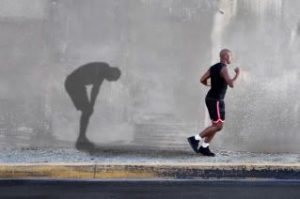Prevention of overtraining | Physio Abhishek Sawant
Well in the last article you learned about the overtraining syndrome. This article focuses more on how to prevent overtraining and its treatment.
Prevention of overtraining can be simple as it requires maintenance of the correct balance between training load and recovery. The most important component of prevention is awareness of the problem particularly among the coaches. Education of coaches in the science of training will lead to decrease in the number of athletes developing this syndrome.
Periodization (proper planning) of training, allowing sufficient recovery time within the training program, and the use of recovery techniques such as massage, hydrotherapy, and relaxation, as well as higher fluid and carbohydrate intakes enables the athletes to cope with
high training loads.

Early recognition that an athlete may be developing the overtraining syndrome may help the trainer or the S&C coach to take immediate measures to avoid further progression. A good relation and communication between the coach/ trainer and the athlete is essential. The coach
can provide feedback on the athletes's condition and details of the past, present and intended training program.
Preventative measures overreaching/overtraining syndrome.

Periodization of training
Taper (reducing the load) before the competition
Adjust training/practice duration and intensity based on performance of the athlete
Ensure adequate calories taken to sustain the training
Ensure adequate water intake
Ensure adequate carbohydrate consumption before, during and after exercise
Ensure adequate sleep
Rest period of atleast 4 to 6 hours between training/practice
Avoid training following infection, heat stroke/stress or periods of high stress
Avoid extreme environmental conditions
Monitoring of overtraining

Unfortunately, no single test can detect overtraining in the sportsperson. However, there are a number of parameters, both clinical and laboratory, which in combination may enable the sportsperson to be monitored in order to prevent the development of overtraining syndrome. Probably the simplest and most effective means of monitoring overtraining is self-analysis by the athlete themselves. Daily documentation should include sources and ratings of stress, fatigue, muscle soreness and quality of sleep.
Treatment of the over trained athlete

In players who present with a relatively short history of overtraining, complete rest is recommended in the short term, and the athlete is advised to get as much sleep as possible over the next 48 hours. Often this can be done over a weekend. If the syndrome is not severe, this may be sufficient, and the athlete may recover and begin the week with renewed energy.
If this brief period of rest does not reduce the athlete & fatigue, the overtraining syndrome has developed. This may take weeks or months to resolve. Treatment includes rest, attention to dietary and fluid intake, and psychological support.
However, when a sportsperson presents with a viral illness and has an elevated temperature, intense training is not recommended as serious illness may develop or the sportsperson may prolong the illness or develop post-viral fatigue syndrome. In a sportsperson with a mild temperature, light training is permissible and may in fact have a positive effect. In cases of nutritional deficiencies, a consultation with the dietician to address the deficits of nutrition and hydration is essential.
Hope this was an useful insight about the strategies to prevent and treat overtraining. Stay tuned for more updates!



Comments are closed.